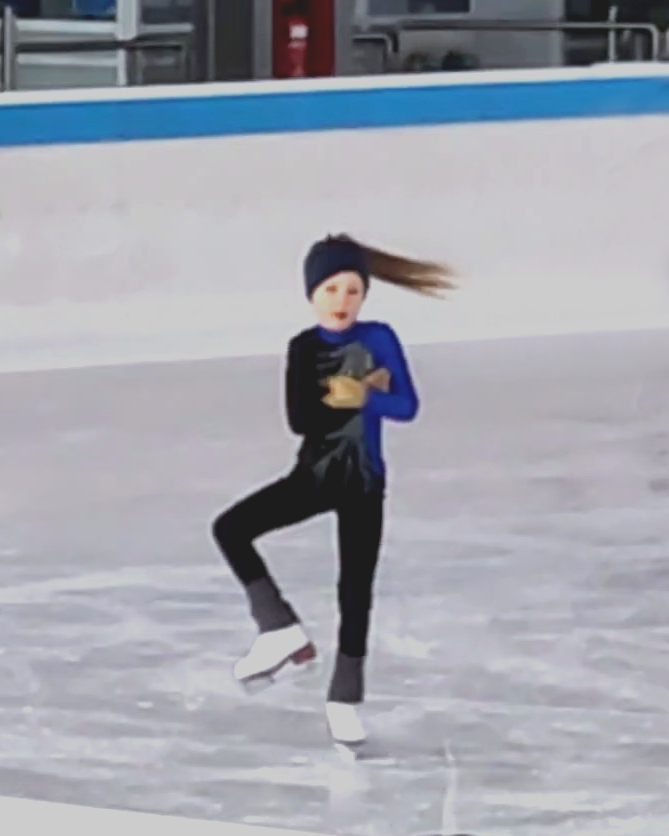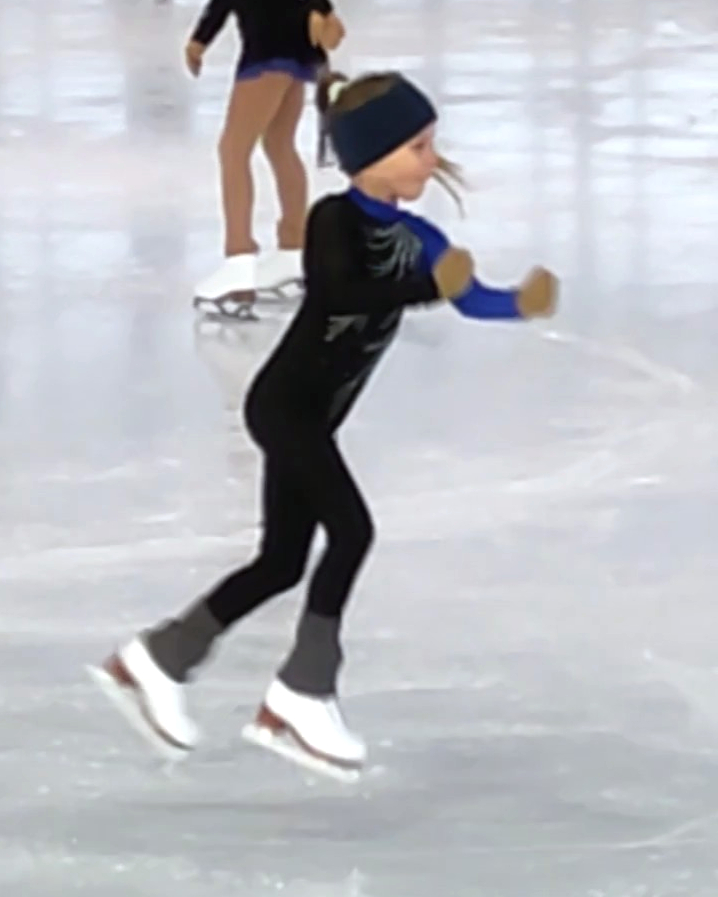I let my daughter stay home today because yesterday was one of those days for her. As a junior athlete she now trains 5 days a week. And sometimes she is just tired, or sore, or both.
Our training schedule that day was:
- 2:00 PM – 3:20 PM: Figure skating
- 3:30 PM – 4:30 PM: Figure skating ballet
- 4:45 PM – 5:30 PM: Jump training
If you want to stay in the program, all of these are mandatory. The jump training was her first time ever and she liked it a lot.

An average lesson for a beginner figure skater
What she practiced on the ice:
Warm up:
- forward stroking
- fw and bw one-legged slaloms
- spirals, connected over the diagonal line of the rink (this is an exam element)
Edges:
- Mohawk sequence in a circle
- Step sequence in a figure 8:
- FWO three-turn
- chassé
- FWI Mohawk, then step over to outside edge into the second circle of the 8-shape
- FWI twizzles (double three-turns)

Spins:
- cross-legged spin
- sit spin

Jumps:
- Salchow
- Toeloop
- Waltz jump & Loop combo
- Flip
- Split jump & Flip combo
- Camel spin
Improvisation over music

Jump training
- Warm-up (running around the rink)
- Leg stretches at the bar
- Leg-swings (front to spiral)
- Jump rope:
- relaxed jumping for warm-up
- swinging the rope in one hand on either side while jumping
- another lap around the rink
- Stair drills
- jumping up the stairs on both legs, if possible over two steps
- jumping up the stairs on one leg
- Spins (camel and sit spin) on a spinner
- Simple 180° jump drills (arm-foot-coordination), two-legged
- Loop / rotation drills (jumping in loop position 3-5× while rotating, then taking off and rotating in the air like a loop jump)
- Lutz drills (proper toe-pick position and jump coordination)
- Axel drills (walk through and jump)
- Strength / calisthenics: smooth transition from spiral to pistol seat (both legs, can be done on a spinner for increased difficulty)
Road to Axel
What is most interesting to me is that my daughter is already participating in the Axel drills. Spinning on an EDEA spinner can also be quite daunting for a young kids. Those spinners are pretty mean, as they simulate a real rocker and feel quite wobbly.
She did well, compared to myself. I have also done a lot of off-ice training, with various coaches, and i feel like at this point, I could write a book just about those exercises, but there are still so many more to try too. Off-ice training is so helpful though. Even though it sometimes feels like you’re making a ton of progress off the ice and non in the actual theater… it absolutely helps to form muscle memory. I’d even go as far as saying that people who constantly claim off-ice doesn’t work for them simply haven’t done enough of it. It’s certainly my experience, as I can never make time for it, but when I actually do, I find that I learn so much!
So I hope this can encourage you to try off-ice drills. If you are an adult skater though, please don’t compare yourself to small kids. They learn a lot differently from adults. In some areas it takes them longer to understand certain moves, in others they are so incredibly fast… It’s just so different from the adult skating experience though, that I would not worry about it. Or, as I say: There’s always some four-year-old out there skating longer and better than you.


Leave a Reply